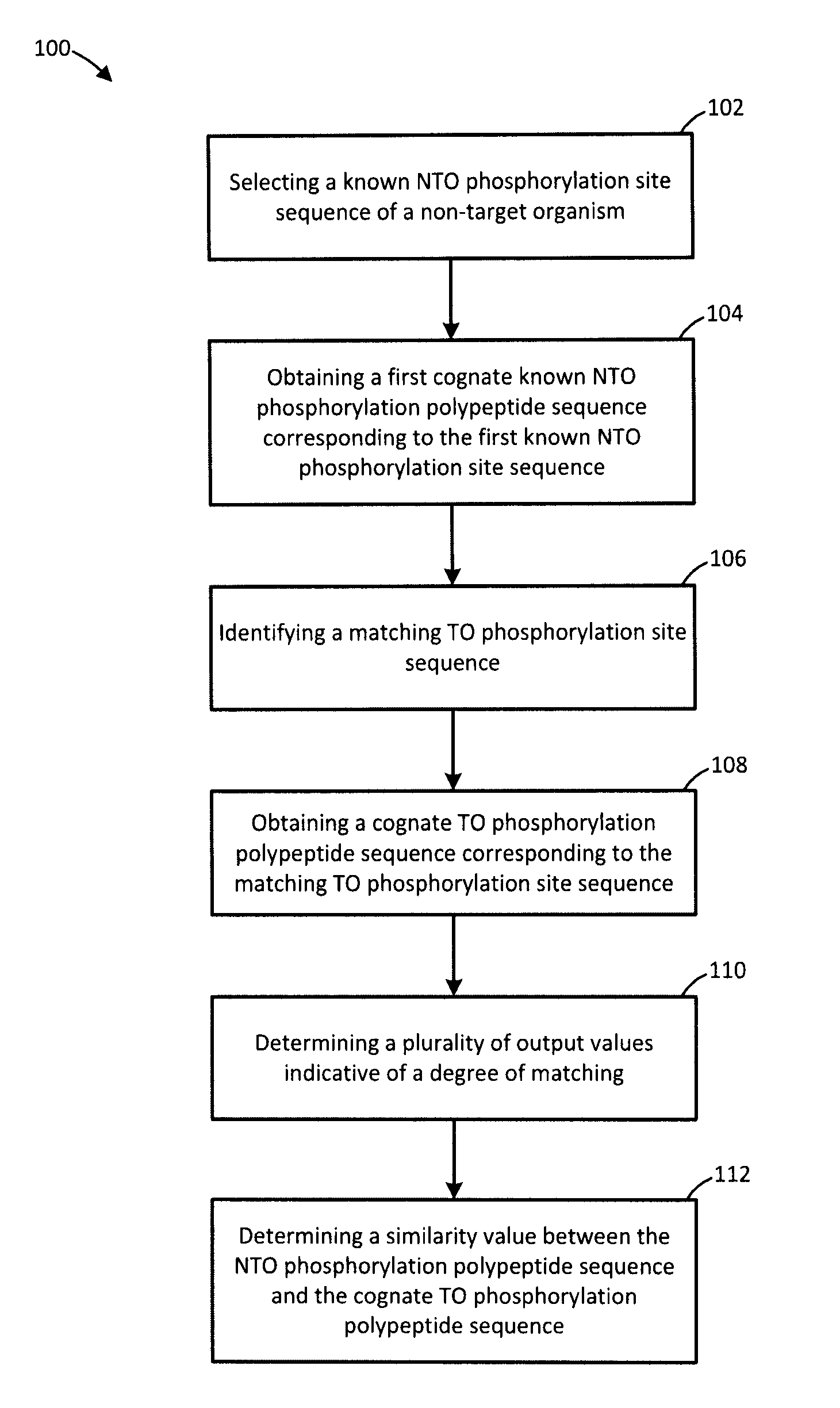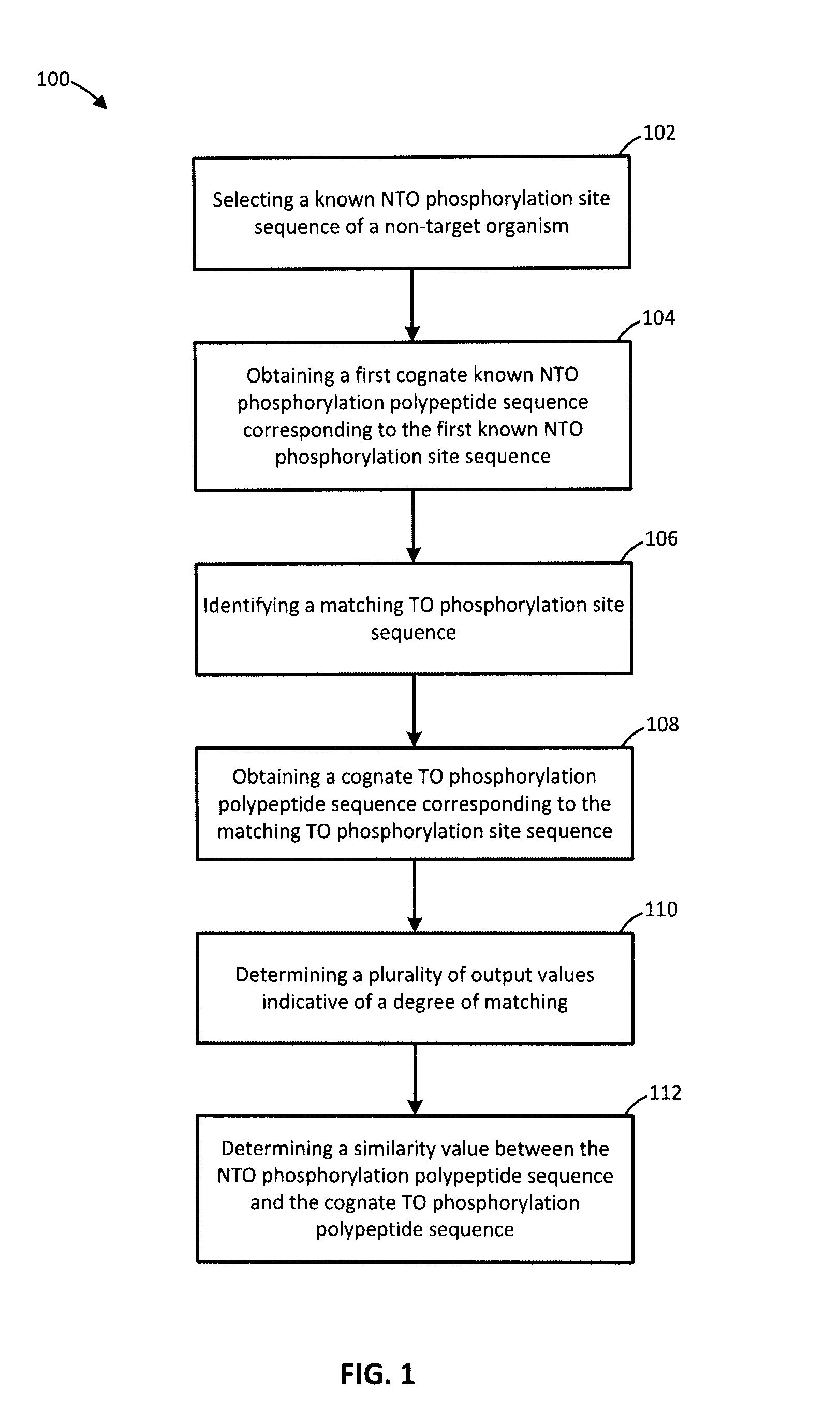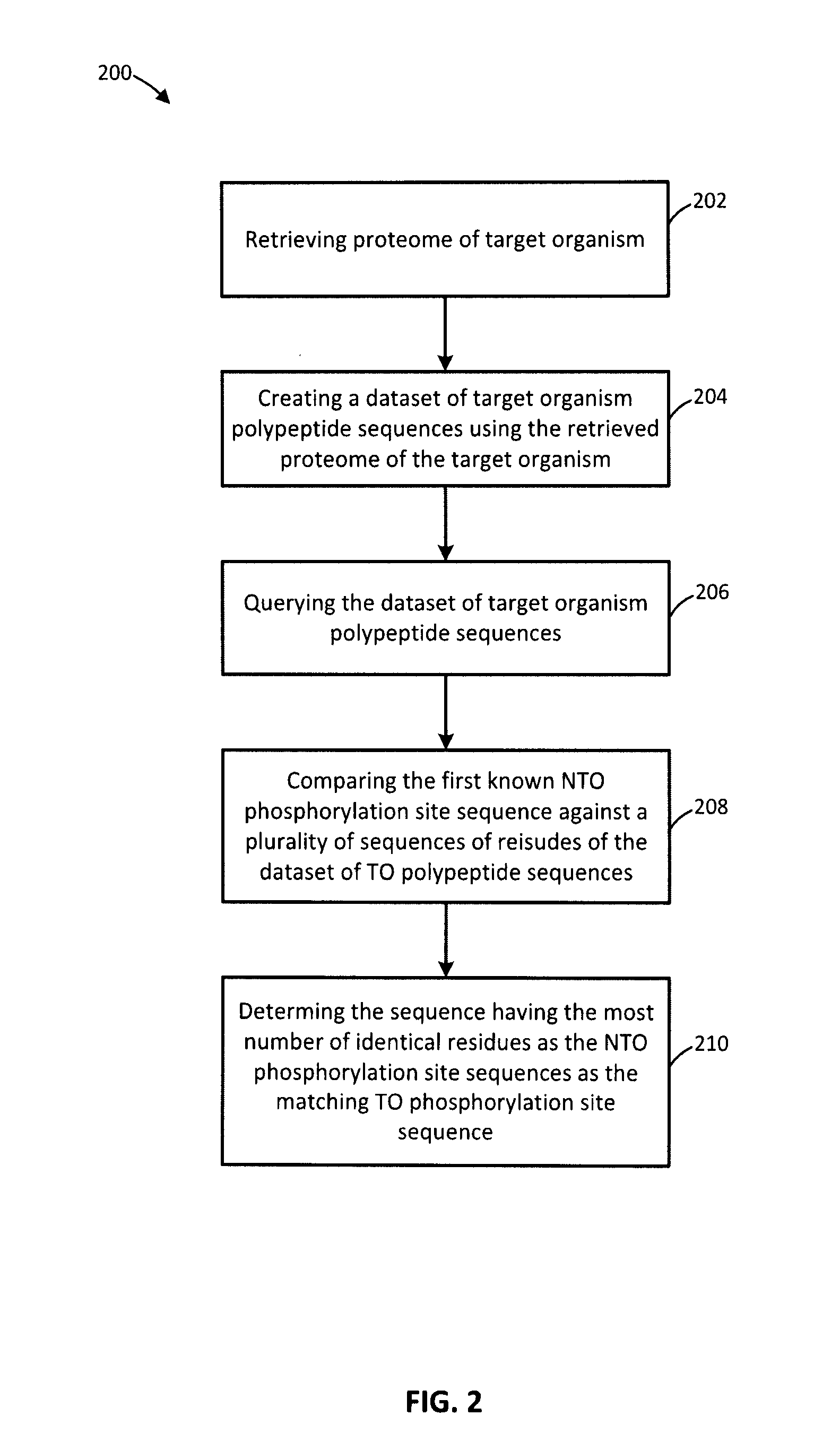Methods and Compositions for Species-Specific Kinome Microarrays
a technology of kinome microarrays and compositions, applied in the field of methods and compositions for species-specific kinome microarrays, can solve the problem of little phosphorylation data available for other species
- Summary
- Abstract
- Description
- Claims
- Application Information
AI Technical Summary
Benefits of technology
Problems solved by technology
Method used
Image
Examples
Embodiment Construction
[0084]The kinome microarray is a relatively new technology for studying phosphorylation-mediated cellular signalling. Other than for human, rat, and mouse, relatively little phosphorylation data are available for most organisms, making it difficult to design kinome microarrays suitable for studying them. Recently a protocol was developed for leveraging known phosphorylation sites from one organism to identify putative sites in a different organism. While effective, this procedure is time-consuming, tedious, and cannot feasibly make use of even a small fraction of the known phosphorylation sites. Methods and systems for identifying putative phosphorylation sites in an organism of interest are provided. In an embodiment, the disclosure includes a collection of Perl scripts called Design Array for PhosPhoryLation Experiments (DAPPLE) that automates the identification of putative phosphorylation sites in an organism of interest, improving and accelerating the process of designing kinome...
PUM
| Property | Measurement | Unit |
|---|---|---|
| Length | aaaaa | aaaaa |
Abstract
Description
Claims
Application Information
 Login to View More
Login to View More - R&D
- Intellectual Property
- Life Sciences
- Materials
- Tech Scout
- Unparalleled Data Quality
- Higher Quality Content
- 60% Fewer Hallucinations
Browse by: Latest US Patents, China's latest patents, Technical Efficacy Thesaurus, Application Domain, Technology Topic, Popular Technical Reports.
© 2025 PatSnap. All rights reserved.Legal|Privacy policy|Modern Slavery Act Transparency Statement|Sitemap|About US| Contact US: help@patsnap.com



